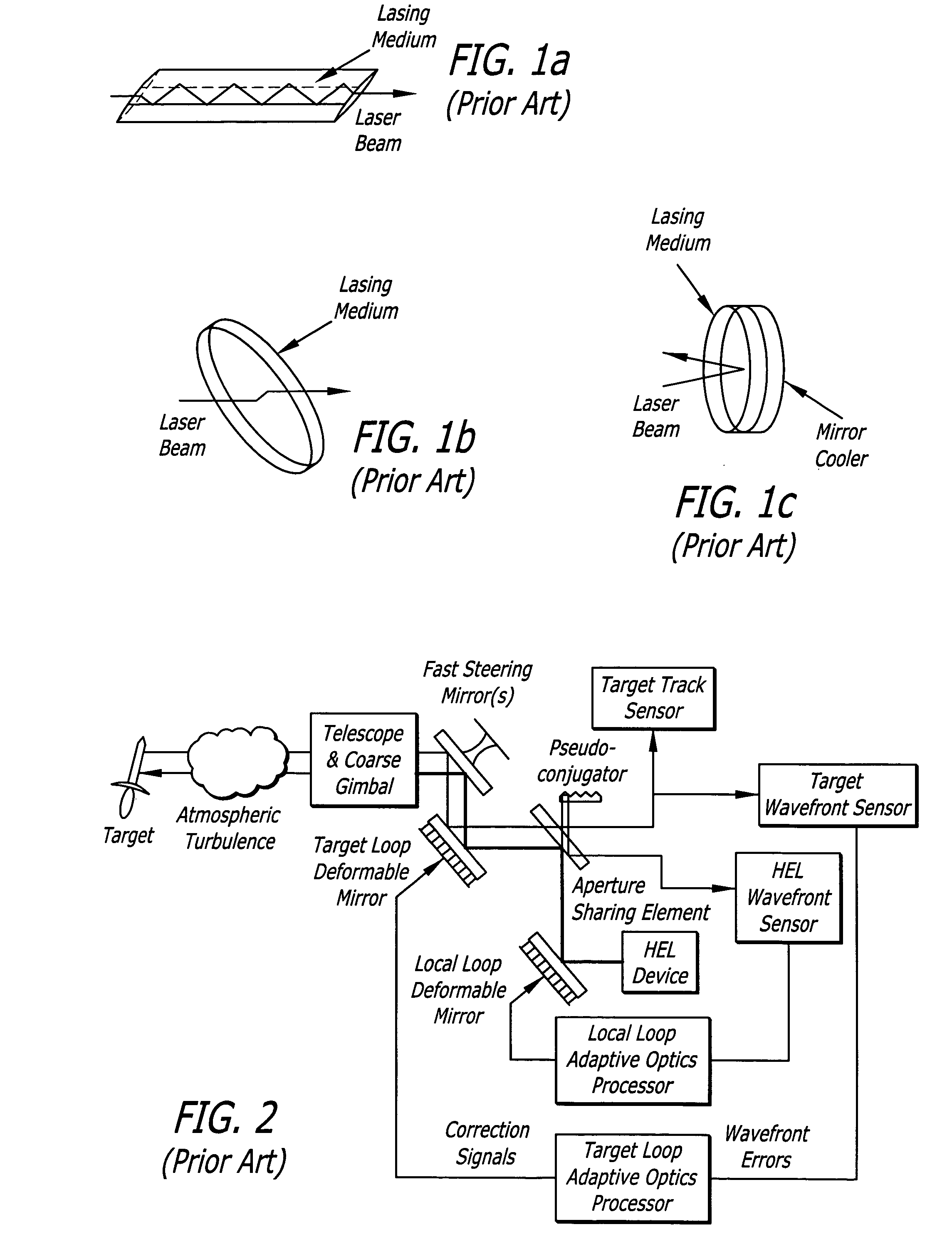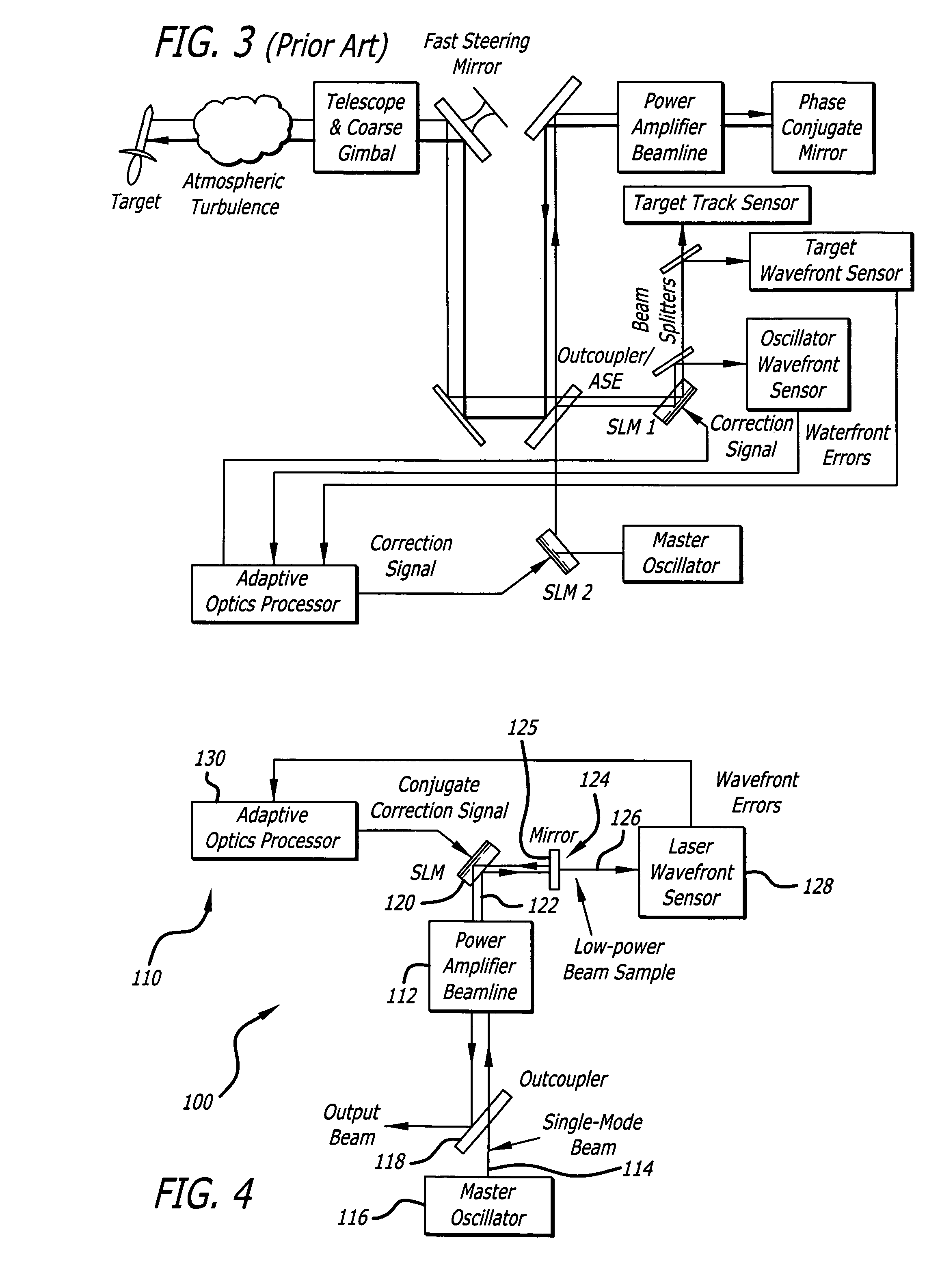Linear adaptive optics system in low power beam path and method
a linear adaptive optics and beam path technology, applied in the field of optics, can solve the problems of reducing durability and/or increasing manufacturing costs, affecting the performance of conventional adaptive optics systems using deformable mirrors, and affecting the accuracy of high-power beams. , to achieve the effect of facilitating the correction of aberration
- Summary
- Abstract
- Description
- Claims
- Application Information
AI Technical Summary
Benefits of technology
Problems solved by technology
Method used
Image
Examples
Embodiment Construction
[0024]Illustrative embodiments and exemplary applications will now be described with reference to the accompanying drawings to disclose the advantageous teachings of the present invention.
[0025]While the present invention is described herein with reference to illustrative embodiments for particular applications, it should be understood that the invention is not limited thereto. Those having ordinary skill in the art and access to the teachings provided herein will recognize additional modifications, applications, and embodiments within the scope thereof and additional fields in which the present invention would be of significant utility.
[0026]Traditional high power lasers rely on the geometry and thermal design of the laser medium and pumphead (cooling and support structure) to minimize the effects of thermally induced distortions on the beam quality of the laser. The most common geometries for high power bulk solid-state lasers are the parallelogram slab, disk, and active mirror, a...
PUM
 Login to View More
Login to View More Abstract
Description
Claims
Application Information
 Login to View More
Login to View More - R&D
- Intellectual Property
- Life Sciences
- Materials
- Tech Scout
- Unparalleled Data Quality
- Higher Quality Content
- 60% Fewer Hallucinations
Browse by: Latest US Patents, China's latest patents, Technical Efficacy Thesaurus, Application Domain, Technology Topic, Popular Technical Reports.
© 2025 PatSnap. All rights reserved.Legal|Privacy policy|Modern Slavery Act Transparency Statement|Sitemap|About US| Contact US: help@patsnap.com



